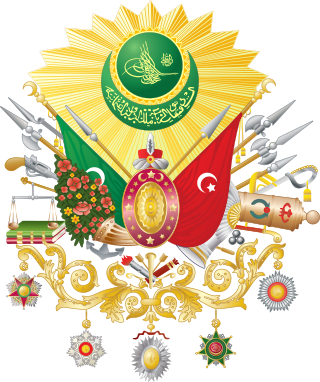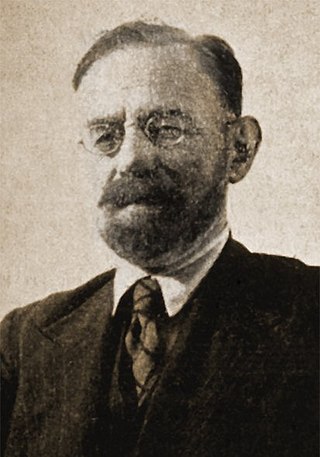
The Eyalet of Cyprus was an eyalet (province) of the Ottoman Empire made up of the island of Cyprus, which was annexed into the Empire in 1571. The Ottomans changed the way they administered Cyprus multiple times. It was a sanjak (sub-province) of the Eyalet of the Archipelago from 1670 to 1703, and again from 1784 onwards; a fief of the Grand Vizier ; and again an eyalet for the short period from 1745 to 1748.

Selimiye Mosque, historically known as Cathedral of Saint Sophia or Ayasofya Mosque, is a former Christian cathedral converted into a mosque, located in North Nicosia. It has historically been the main mosque of the city. The Selimiye Mosque is housed in the largest and oldest surviving Gothic church in Cyprus possibly constructed on the site of an earlier Byzantine church.

The following outline is provided as an overview of and topical guide to the Ottoman Empire:

Büyük Han is the largest caravansarai on the island of Cyprus and is considered to be one of the finest buildings on the island. Located in the capital of Cyprus, it was built by the Ottomans in 1572, the year after they had seized Cyprus from the Venetians. In the centre of the open courtyard is a mosque with a fountain for pre-prayer ablutions. It became the first city prison under British administration. After spending most of the 1990s being restored, the inn has been revived as a thriving arts centre, consisting of several galleries and workshops. There are also several courtyard cafes and souvenir shops.

The Kyrenia Gate, is a gate in the Nicosia walls, in North Nicosia, Northern Cyprus. It was the gate which was used for transport to the northern areas, especially Kyrenia.

Sarayönü, officially Atatürk Square, is a square in North Nicosia. It is the centre of the Turkish part of the city and was the administrative center of the island for centuries.

Kadı Menteş Mansion is a mansion in the Selimiye quarter of North Nicosia. It is located at the intersection of the Selimiye Square and the İdadi Street, and is currently as the headquarters of the Turkish Cypriot Union of Municipalities.

Yahya Efendi or Molla Shaykhzadeh ul Yahya, Ottoman Islamic scholar, sufi sheikh, and poet buried in Beshiktash, Istanbul.

Bedesten or Bedestan is a historical building in the Selimiye quarter of North Nicosia, located directly beside the Selimiye Mosque. The structure has a long and complicated history spanning more than one thousand years. Originally built as a church in about the sixth century, and expanded and rebuilt between the twelfth and sixteenth centuries, dedicated to Saint Nicholas, it was converted to a bedesten, a type of covered market, during the period of Ottoman rule. It is currently used as a cultural centre.

Dervish Pasha Mansion is a historical mansion and ethnographic museum in the Arab Ahmet quarter of Nicosia, currently located in North Nicosia. It lies on the Beliğ Paşa Street and has two floors. It is considered to be one of the finest examples of Ottoman architecture in Cyprus.
Akbaba, is a neighborhood in Beykoz district of Istanbul Province, Turkey. It is home to the türbe of Akbaba Sultan, a Bektashi sufi baba who participated in the Conquest of Constantinople and was a mentor of Ottoman Sultan Mehmet the Conqueror. Following the Conquest, he moved to this valley rich with spring waters and established a tekke with his dervish murids. The tekke was last revived by the Naqshbandi Shaykh Abdulhakim Efendi of Bukhara between 1876-1889.

Bayraktar Mosque is a mosque in Nicosia, Cyprus, currently placed in the southern sector of the city administered by the Republic of Cyprus.
Ayşe Hubbi Hatun was a lady-in-waiting to Sultan Selim II and later to his son Sultan Murad III of the Ottoman Empire. She was a notable Ottoman poetess of the sixteenth century.
The Tomb of Kurt Baba is a türbe in North Nicosia. Up until recent times, it was also known as the "Tomb of Kutup Baba" or "Üçler Tomb", but the corruption of the name "Kutup Baba" as "Kurt Baba" stuck as the common name. It is situated in the intersection point of Asmaaltı Street and Kurt Baba Street, and in the corner of Asmaaltı Square.

Laleli Mosque is a mosque in the Abdi Çavuş quarter of the walled city of Nicosia, currently located in North Nicosia. It is located on Ali Ruhi Street. Its name, meaning "the Mosque with Tulips", is thought to be derived from the tulip motifs adorning its original minaret. Originally a small medieval chapel, it was enlarged and converted to a mosque in the 19th century.

Mehmet Suphi Ezgi was an Ottoman-born Turkish military physician who specialized in neurology, and a musician, musicologist and composer. He is best known for his studies of Ottoman classical music.
List of historical tekkes, zawiyas, and dergahs in Istanbul, Turkey:

The İttik Dede's Turbeh, also known as Yitik Dede's Turbeh or İsmail Çavuş's Turbeh, is an Ottoman mausoleum located in the northern part of Nicosia in Northern Nicosia. It is situated in the Selimiye neighborhood, on the south side of the Selimiye Square.














